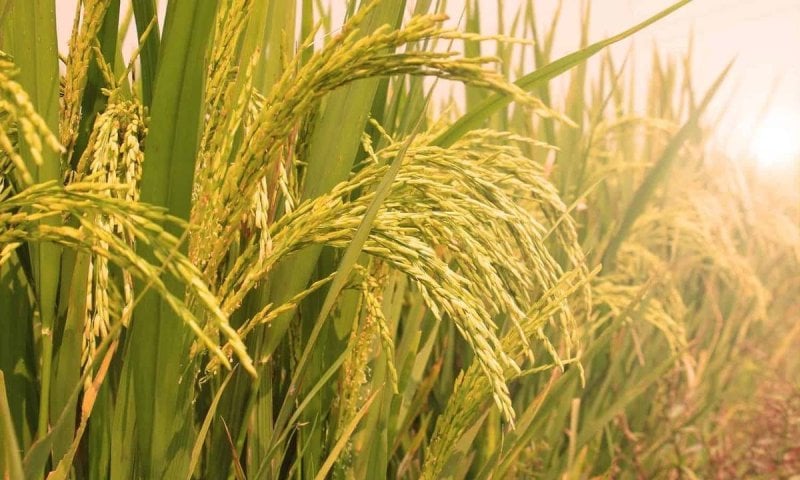Tags
Wild rice season opens soon, but harvesters must ensure rice is ripe; DNR offers tips for those new to harvesting
As the Aug. 15 wild rice season opening date approaches, the Minnesota Department of Natural Resources reminds harvesters that rice stands must be ripe before they can be legally harvested.
Wild rice harvesters going out during the upcoming season will find challenging conditions throughout much of Minnesota.
“Frequent and strong summer storms created high water levels and washed out many rice beds,” said Ann Geisen, Minnesota DNR wildlife lake specialist. “Overall rice stands range from poor to average.”
As people consider harvesting, they need to know the regulations that help protect wild rice stands for future years. Harvesters are allowed to take ripe wild rice each year during the harvesting season that runs between Aug. 15 and Sept. 30, but Minnesota’s green rice law makes it illegal to harvest unripe or “green” rice, even within the dates of the harvest season. So, although rice beds might look like they are ready, ricers must make sure the grain is ripe and falling easily from the stalk before attempting to harvest it. Additionally, Minnesota’s early teal season is Sept. 1-5 and a safety mindset and mutual courtesy will allow for successful early waterfowl hunting and wild ricing.
Early reports from Minnesota DNR and tribal biologists indicate poor to average rice stands across central and northern Minnesota, with variable conditions for individual waters.
“Scouting will be essential this year to find harvestable stands of rice,” Geisen said. “One bright spot is that the high water has significantly improved access conditions this year compared to last year. If folks find waters with harvestable rice, the water should be deep enough to launch the canoe.”
The Minnesota DNR has posted a wild rice harvesting outlook report online. The outlook report is available each year on the Minnesota DNR’s wild rice management webpage (mndnr. gov/wildlife/shallowlakes/ wildrice.html), along with license, regulation and safety information. Anyone looking for more information on wild rice in their area can contact their local Minnesota DNR wildlife manager (mndnr.gov/areas/wildlife) or Shallow Lakes Program specialist (mndnr.gov/wildlife/ shallowlakes/specialists. html).
Teal hunting season Since wild rice is ripening at the same time as Minnesota’s early waterfowl hunting seasons, over-water waterfowl hunters are urged to be aware of and cautious about wild ricers no matter where they hunt. Those who plan to hunt the early teal season on the Leech Lake or White Earth reservations should be aware of hunting restrictions on or near posted rice beds. Early-season teal hunters may not hunt teal within onehalf mile of posted wild rice beds open to harvest within the boundaries of the Leech Lake Reservation during the early-teal season. On the White Earth Reservation, early-season teal hunters may not hunt teal on wild rice beds posted open to rice harvest. All waterfowl hunters who plan to hunt within the boundaries of the Leech Lake or White Earth reservations are advised to contact the appropriate reservation for more information: Leech Lake Division of Resource Management at 218-3357400; White Earth Division of Natural Resources at 218935-2488. Minnesota’s early teal season is Sept. 1-5, and early goose season is Sept. 1-15.
Harvesting tips Harvesters usually use a canoe with a push pole or paddles for power, and collect rice using two sticks, or flails, to knock mature seeds into the canoe. While labor intensive, harvesting wild rice can be rewarding, and finding a mentor who knows what they’re doing can make the learning process easier.
As part of the Outdoor Skills and Stewardship series, Minnesota DNR staff produced a webinar about how to harvest wild rice. The webinar recording can be viewed online (youtube.com/ watch?v=kJlkWUusuzY).
Harvesters should keep access areas clean by packing out what they pack in. To prevent spreading invasive species, ricers should make sure their canoe and gear are clean before arriving where they intend to rice. Before heading out, harvesters should plan for how the rice will be processed. Novice rice harvesters are often advised to use a processor rather than attempt to process it themselves.
Wild rice (manoomin/ psiŋ) is spiritually, culturally, nutritionally and economically significant to Ojibwe, Dakota and other tribal communities. Additionally, a significant portion of the wild rice in Minnesota is located within Ojibwe reservations or treaty-ceded territory.
It is unlawful for any person to take wild rice grain from any of the waters within the boundaries at the White Earth, Leech Lake, Nett Lake, Vermilion Lake, Grand Portage, Fond du Lac and Mille Lacs reservations, except for tribal members or residents within the reservation from which the rice is collected. In addition, all nontribal members wishing to harvest or buy wild rice within the boundaries of the Leech Lake Reservation must have a Leech Lake Reservation permit. Wild rice regulations are available on the Minnesota DNR website (mndnr.gov/regulations/wildrice/ index.html).
The Minnesota DNR sends out periodic newsletters about rice harvesting topics. People can sign up to receive the email newsletters on the Minnesota DNR homepage (mndnr.gov) by finding the “Get email updates” box, entering an email address, and selecting the “Go” button. Then in the subscription list, check the box for “Wild rice harvesting.”
https://www.elyecho.com/article/1873,wild-rice-season-opens-soon-but-harvesters-must-ensure-rice-is-ripe-dnr-offers-tips-for-those-new-to-harvestingPublished Date: August 10, 2024






